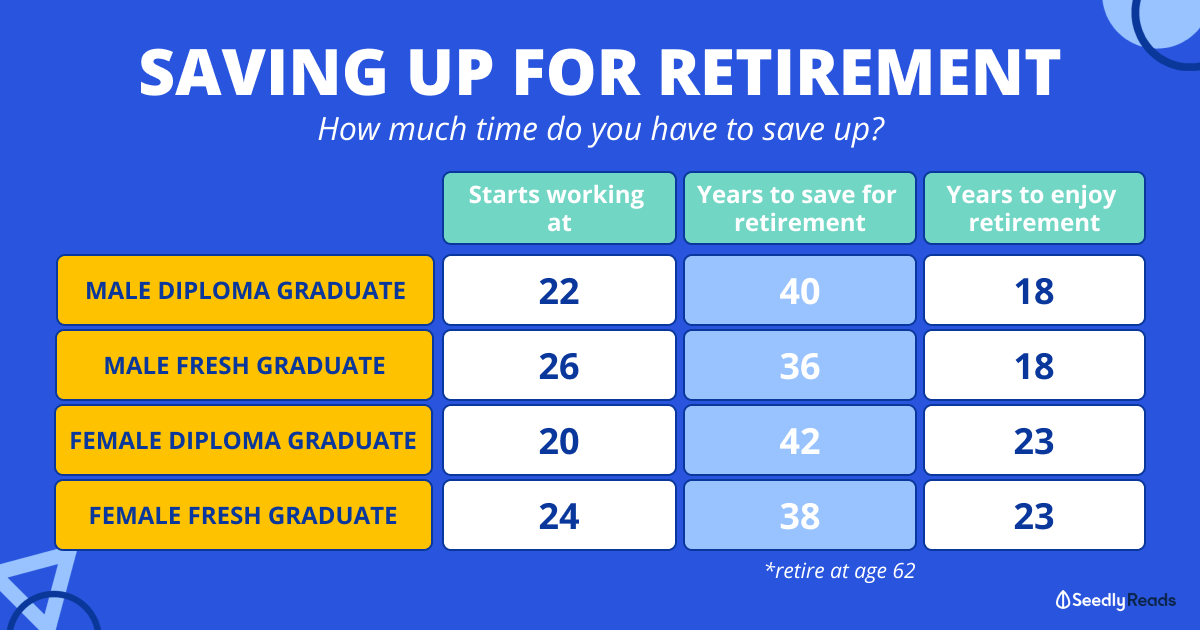
This article could be helpful if you want to make smart decisions regarding your retirement spending. It covers the "4% rule," the three phases of retirement, behavioral goals, budgeting, and how to budget for retirement. Next, learn more about how the 4% rule works and get tips for successful retirement planning. Sign up for my email newsletter to get started! Each month, I will publish new articles about retirement spending! Subscribe to my blog for the latest financial news.
Retirement spending: The 4% rule
The 4% rule, which is simple but very effective in determining how much to withdraw each year from retirement accounts, is an easy guide. It is recommended to withdraw 4% of your total portfolio each year, but you should be aware that this amount will vary depending on your investment strategy and risk tolerance. The 4% rule also depends on factors such as tax rates, the size of your investment portfolio, and your state of residence. To determine the maximum amount you can safely withdraw from your assets and the maximum amount you can withdraw from them, consult a professional financial advisor.
The 4% rule can be a great starting point but it is not enough. The spending habits of retirees change as they age. Many retirees travel more and spend more in their first years. Later on, spending levels fall, with the exception of health care expenses. The 4% rule doesn't apply in these situations. However, it has some advantages. By limiting spending to 4% of income, you can ensure that your money lasts for at least 30 years.

Three phases of retirement spending
You probably spent most of the time working during your last year of employment. It's now that you're retired and it's time for you to think about your spending. Either you keep the same level of spending or you can add new energy and adventure to increase it. If you're still working, you'll want to stick to the same spending levels you had before, but you can add on extras like traveling or dining out once you retire. Retirement comes in three phases: the active, middle and passive.
The "Go to Go" stage is the first phase of retirement. This is the phase where people tend to spend most money. They also tend to travel and play golf, which can require significant amounts of money. The best time to spend more is during retirement. However, it's not the only opportunity to do so. This is the time when medical costs will rise, and you'll want a higher withdrawal rate.
Behavioral goals for retirement spending
Many people don’t understand the psychological and behavioral factors that influence their retirement spending decisions. They have specific future goals that they hope to accomplish, and these goals may not be as tangible as they seem. They might use balance as a way to measure their progress. They may not have had to give up certain experiences or activities during their working years, but they keep this same behavior in retirement. A powerful tool for encouraging financial improvement is setting goals for retirement spending.
To simplify financial planning, identify your goals. Some goals don't have the right scope to be effective. Reducing your debt might not seem like a worthwhile goal. It is possible to buy a small beach home as a retirement house, but it will be a meaningful goal. It is possible to set achievable and quantifiable goals. In this way, you can set yourself a realistic expectation for the future and make smart financial decisions.

Budgeting for retirement expenses
While it is exciting to transition into retirement, it can also be stressful. You need to plan ahead in order to make sure you have enough money to live comfortably. Your budget planning now will make it easier to plan for the future. Even if retirement is decades away, you can start to plan. These are some useful tips to help get you started. This article will assist you in determining how much you can spend on retirement.
It is important to budget for your retirement based on how much you spend transport. While it is tempting to think that your transportation expenses will be minimal once you're retired, they will likely remain constant. Include gas, public transportation, car maintenance, and even vehicle purchases. Keep in mind, however, that you won't need to buy expensive clothes or drive long distances between work and home. Food costs will likely remain the exact same. However you may choose to learn cooking and entertain friends.
FAQ
How to Begin Your Search for A Wealth Management Service
The following criteria should be considered when looking for a wealth manager service.
-
Can demonstrate a track record of success
-
Is based locally
-
Free consultations
-
Supports you on an ongoing basis
-
Has a clear fee structure
-
A good reputation
-
It's simple to get in touch
-
Support available 24/7
-
Offers a variety products
-
Low fees
-
Does not charge hidden fees
-
Doesn't require large upfront deposits
-
Has a clear plan for your finances
-
You have a transparent approach when managing your money
-
Makes it easy for you to ask questions
-
Have a good understanding of your current situation
-
Understands your goals and objectives
-
Is open to regular collaboration
-
Works within your financial budget
-
Does a thorough understanding of local markets
-
Would you be willing to offer advice on how to modify your portfolio
-
Are you willing to set realistic expectations?
Why it is important to manage your wealth?
First, you must take control over your money. Understanding your money's worth, its cost, and where it goes is the first step to financial freedom.
You should also know how much you're saving for retirement and what your emergency fund is.
If you fail to do so, you could spend all your savings on unexpected costs like medical bills or car repairs.
Who should use a wealth manager?
Anyone who wants to build their wealth needs to understand the risks involved.
Investors who are not familiar with risk may not be able to understand it. Poor investment decisions could result in them losing their money.
People who are already wealthy can feel the same. They might feel like they've got enough money to last them a lifetime. They could end up losing everything if they don't pay attention.
Every person must consider their personal circumstances before deciding whether or not to use a wealth manager.
How to Choose An Investment Advisor
Selecting an investment advisor can be likened to choosing a financial adviser. Two main considerations to consider are experience and fees.
This refers to the experience of the advisor over the years.
Fees are the cost of providing the service. These costs should be compared to the potential returns.
It is important to find an advisor who can understand your situation and offer a package that fits you.
What are the potential benefits of wealth management
Wealth management has the main advantage of allowing you to access financial services whenever you need them. Saving for your future doesn't require you to wait until retirement. You can also save money for the future by doing this.
To get the best out of your savings, you can invest it in different ways.
For example, you could put your money into bonds or shares to earn interest. You could also buy property to increase income.
If you use a wealth manger, someone else will look after your money. You don't have the worry of making sure your investments stay safe.
Statistics
- As of 2020, it is estimated that the wealth management industry had an AUM of upwards of $112 trillion globally. (investopedia.com)
- According to Indeed, the average salary for a wealth manager in the United States in 2022 was $79,395.6 (investopedia.com)
- As previously mentioned, according to a 2017 study, stocks were found to be a highly successful investment, with the rate of return averaging around seven percent. (fortunebuilders.com)
- According to a 2017 study, the average rate of return for real estate over a roughly 150-year period was around eight percent. (fortunebuilders.com)
External Links
How To
How to Invest Your Savings to Make Money
You can earn returns on your capital by investing your savings into various types of investments like stock market, mutual fund, bonds, bonds, real property, commodities, gold and other assets. This is known as investing. This is called investing. It does not guarantee profits, but it increases your chances of making them. There are various ways to invest your savings. Some of them include buying stocks, Mutual Funds, Gold, Commodities, Real Estate, Bonds, Stocks, and ETFs (Exchange Traded Funds). These methods are described below:
Stock Market
The stock market is one of the most popular ways to invest your savings because it allows you to buy shares of companies whose products and services you would otherwise purchase. Also, buying stocks can provide diversification that helps to protect against financial losses. You can, for instance, sell shares in an oil company to buy shares in one that makes other products.
Mutual Fund
A mutual fund is a pool of money invested by many individuals or institutions in securities. They are professionally managed pools of equity, debt, or hybrid securities. A mutual fund's investment objectives are often determined by the board of directors.
Gold
Gold is a valuable asset that can hold its value over time. It is also considered a safe haven for economic uncertainty. Some countries use it as their currency. Gold prices have seen a significant rise in recent years due to investor demand for inflation protection. The supply and demand factors determine how much gold is worth.
Real Estate
Real estate includes land and buildings. When you buy realty, you become the owner of all rights associated with it. You may rent out part of your house for additional income. You can use your home as collateral for loan applications. The home could even be used to receive tax benefits. However, you must consider the following factors before purchasing any type of real estate: location, size, condition, age, etc.
Commodity
Commodities are raw materials like metals, grains, and agricultural goods. These commodities are worth more than commodity-related investments. Investors who want to capitalize on this trend need to learn how to analyze charts and graphs, identify trends, and determine the best entry point for their portfolios.
Bonds
BONDS ARE LOANS between governments and corporations. A bond can be described as a loan where one or both of the parties agrees to repay the principal at a particular date in return for interest payments. When interest rates drop, bond prices rise and vice versa. An investor purchases a bond to earn income while the borrower pays back the principal.
Stocks
STOCKS INVOLVE SHARES in a corporation. A share represents a fractional ownership of a business. If you own 100 shares, you become a shareholder. You can vote on all matters affecting the business. You will also receive dividends if the company makes profit. Dividends, which are cash distributions to shareholders, are cash dividends.
ETFs
An Exchange Traded Fund (ETF), is a security which tracks an index of stocks or bonds, currencies, commodities or other asset classes. ETFs are traded on public exchanges like traditional mutual funds. The iShares Core S&P 500 eTF (NYSEARCA – SPY), for example, tracks the performance Standard & Poor’s 500 Index. Your portfolio will automatically reflect the performance S&P 500 if SPY shares are purchased.
Venture Capital
Venture capital is private financing venture capitalists provide entrepreneurs to help them start new businesses. Venture capitalists finance startups with low to no revenue and high risks of failure. Usually, they invest in early-stage companies, such as those just starting out.